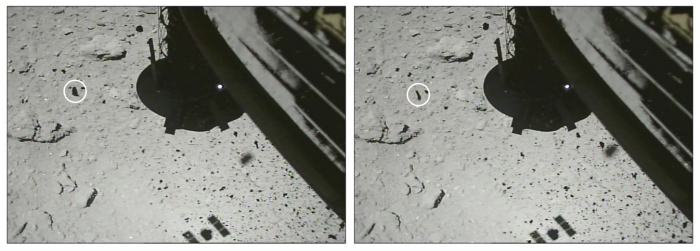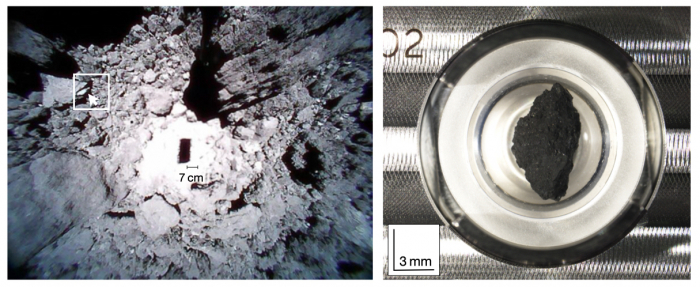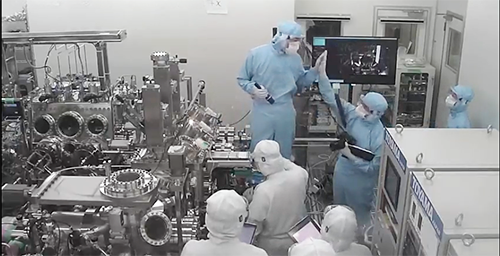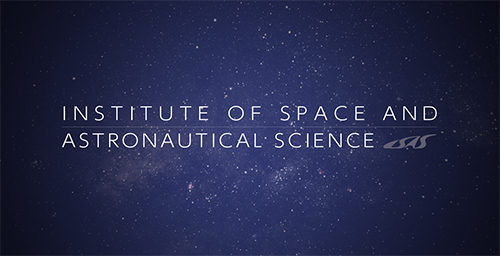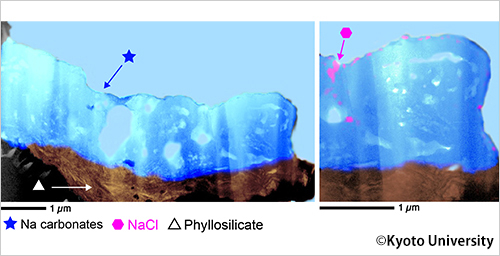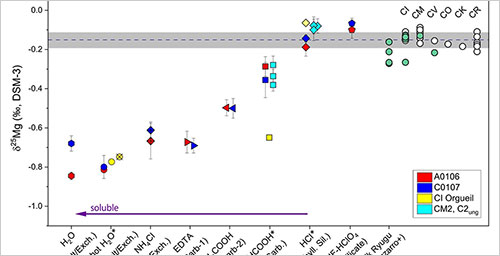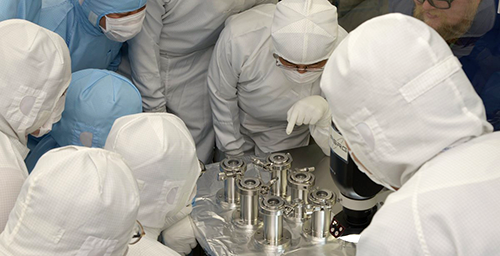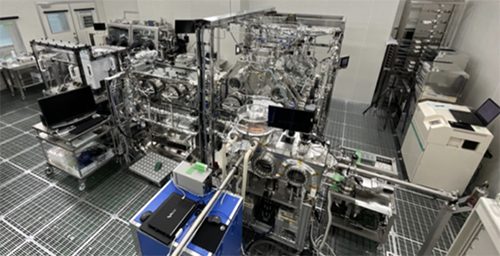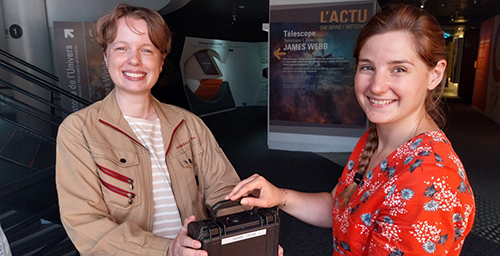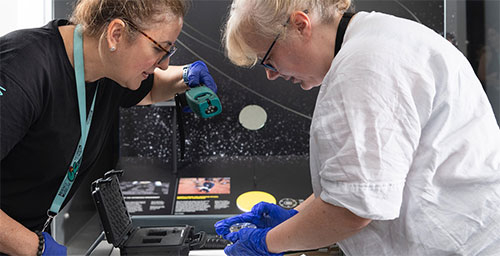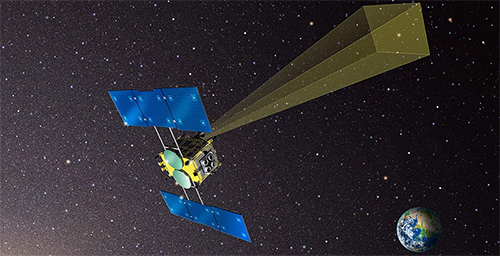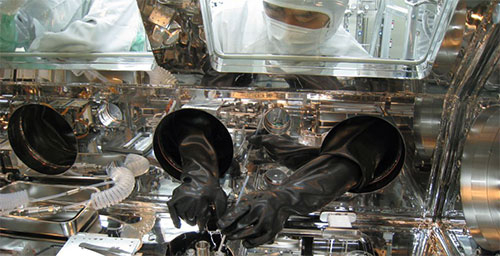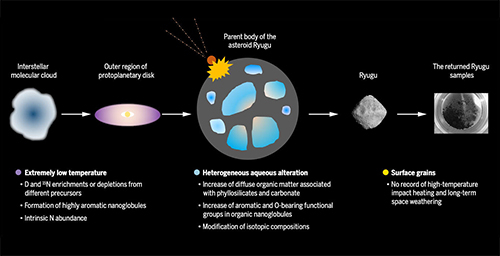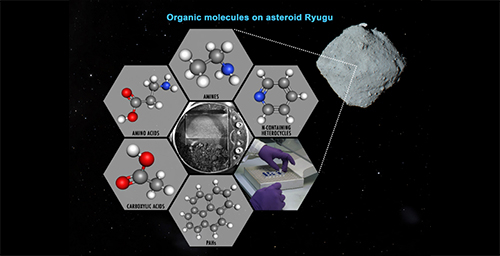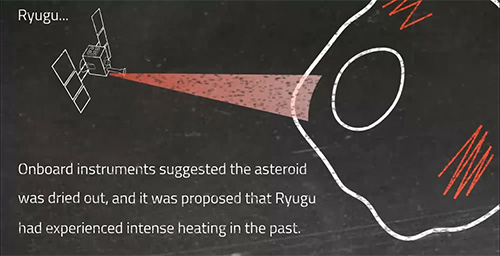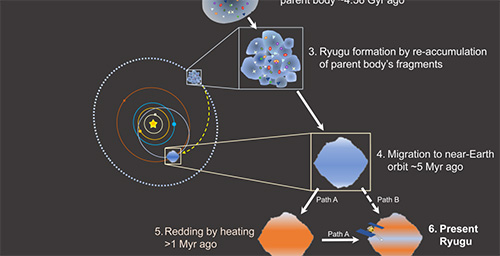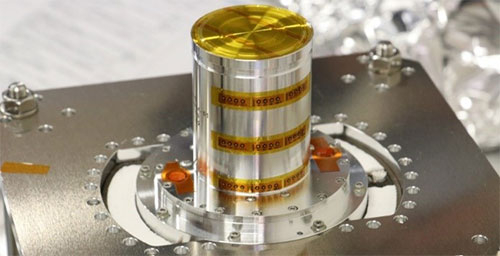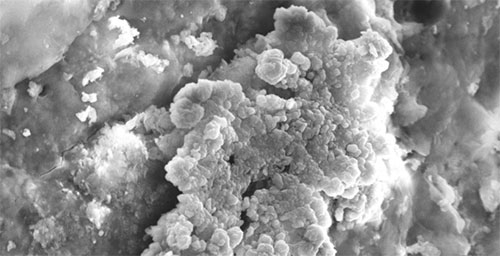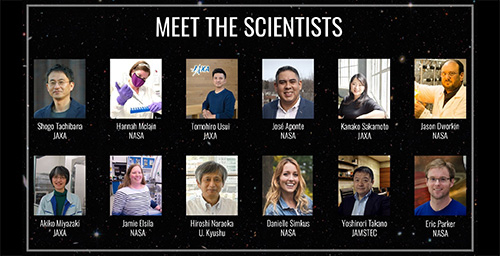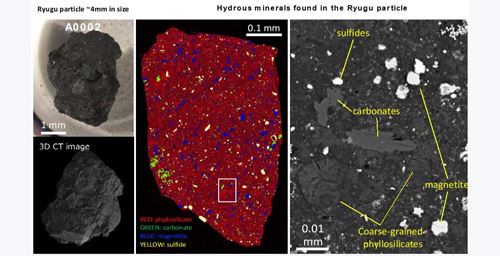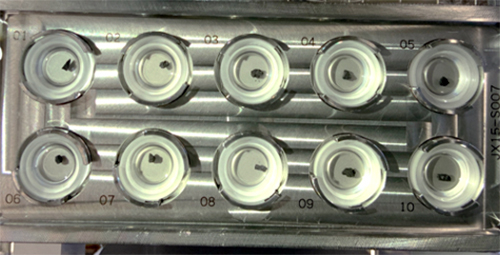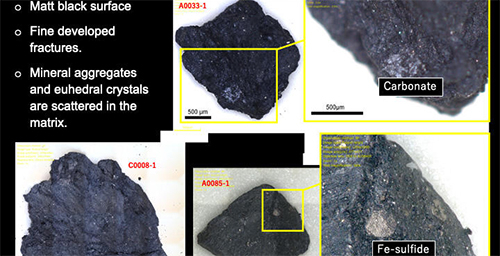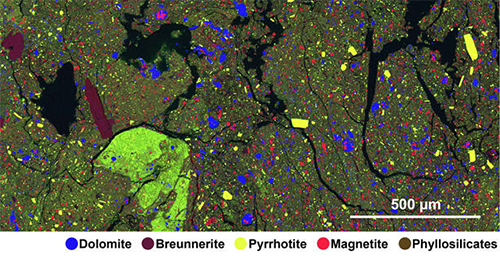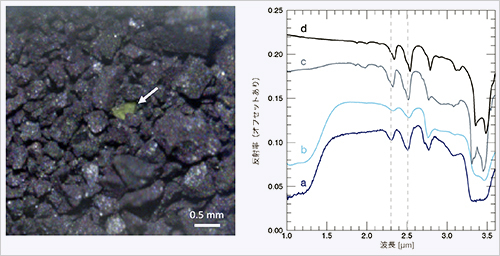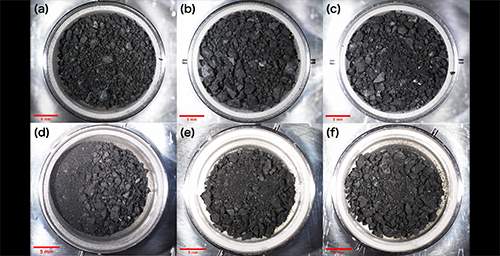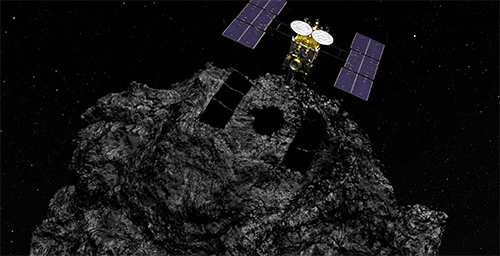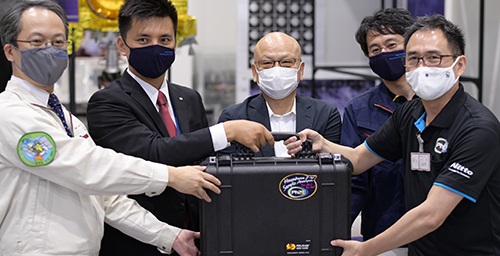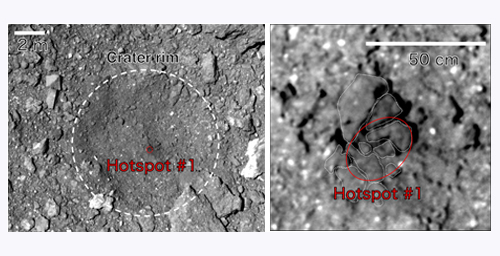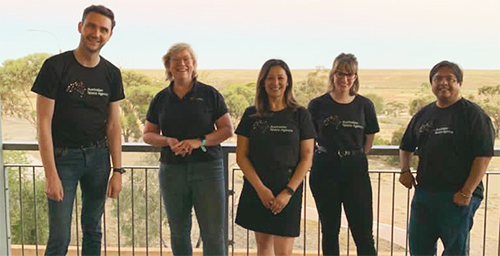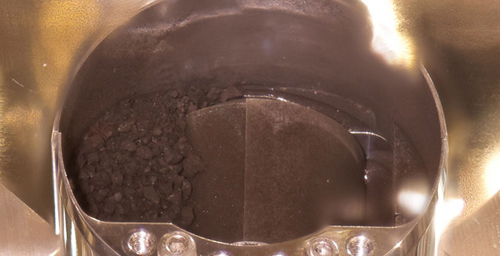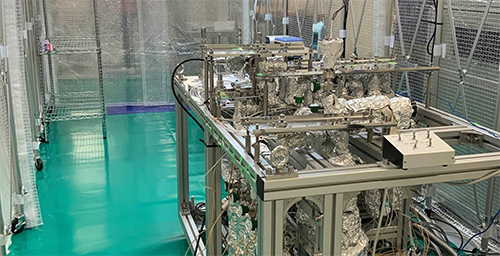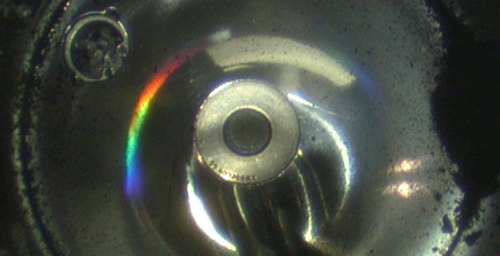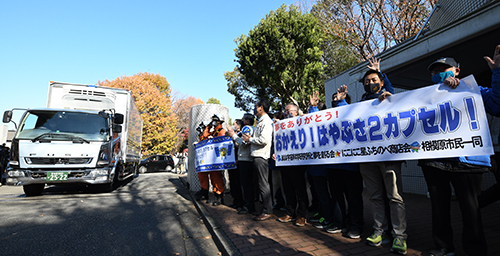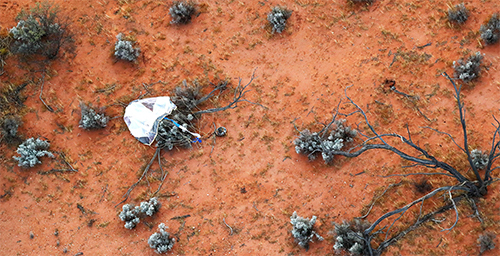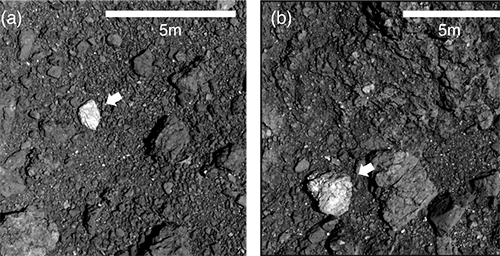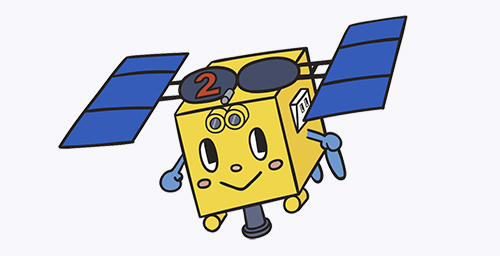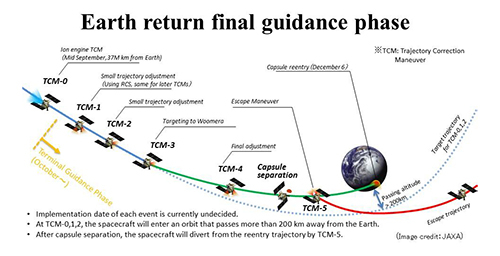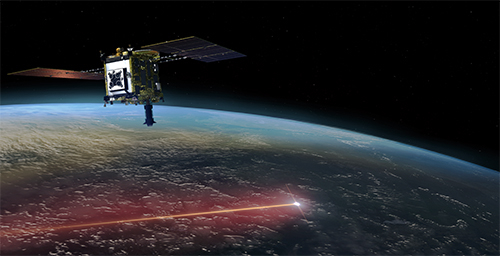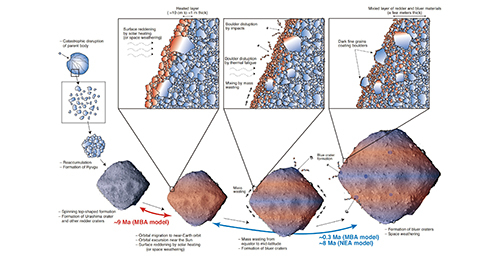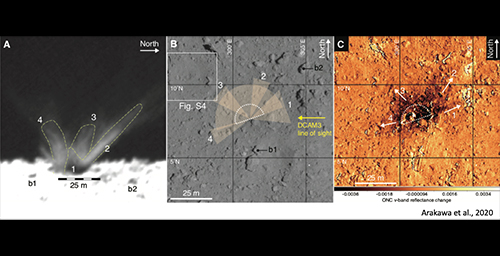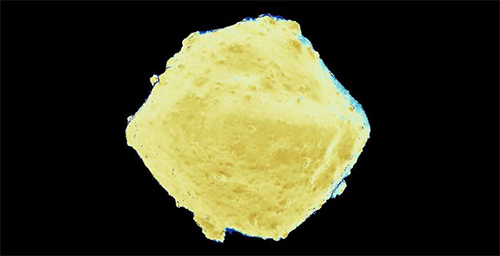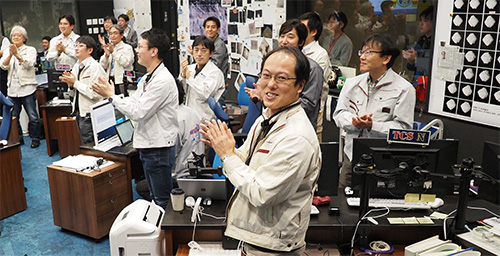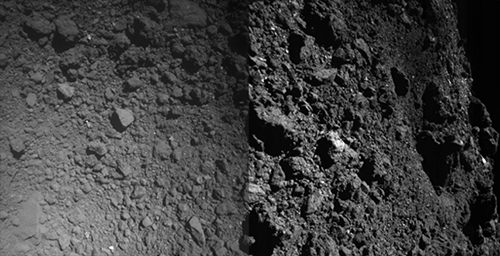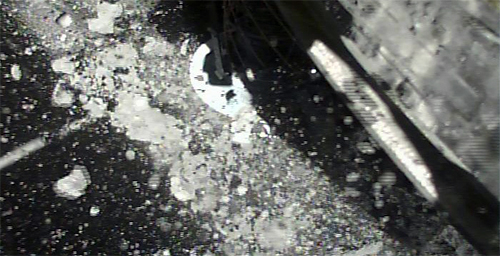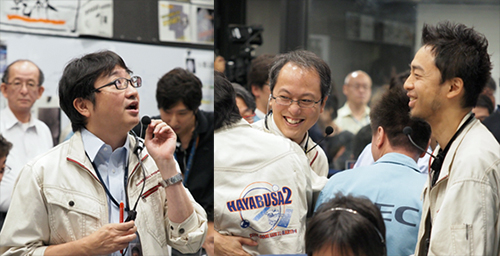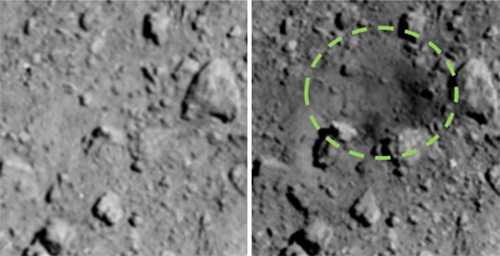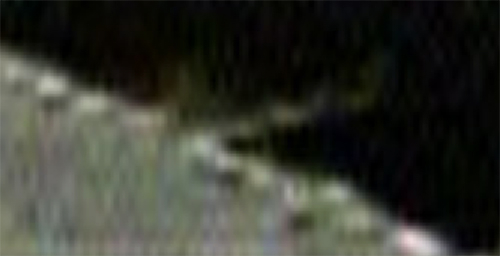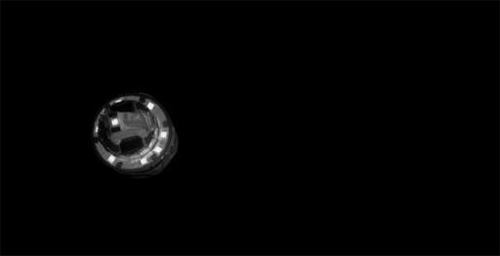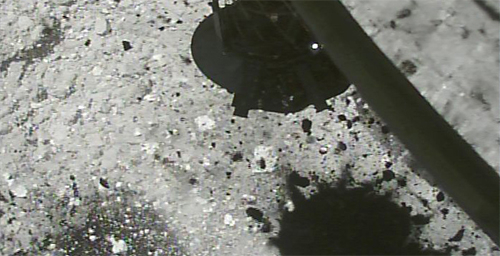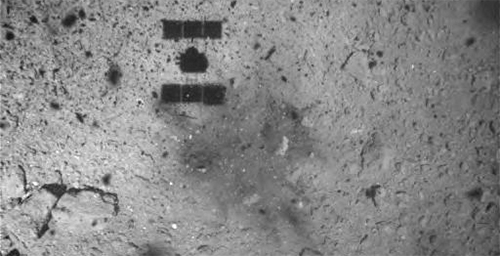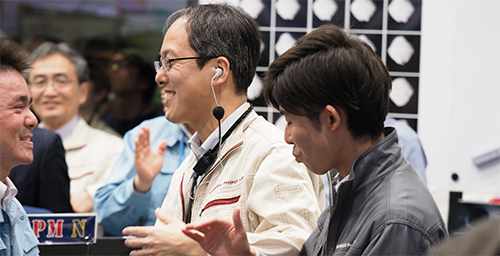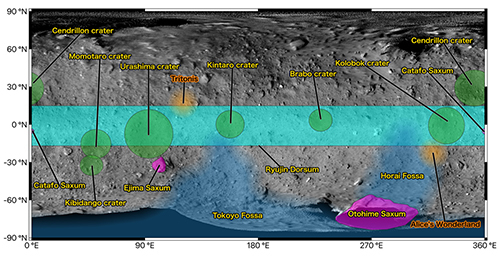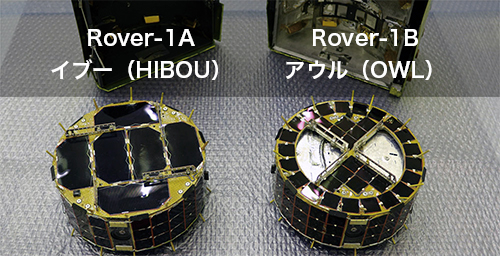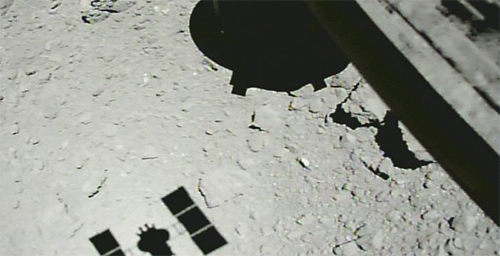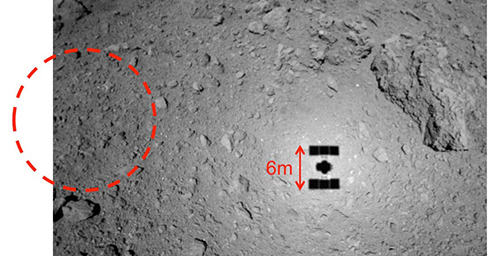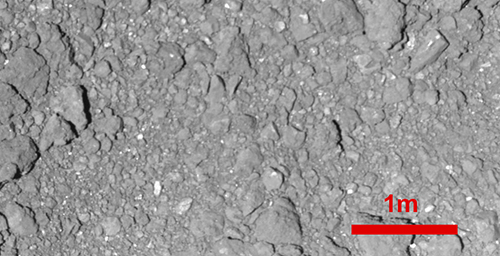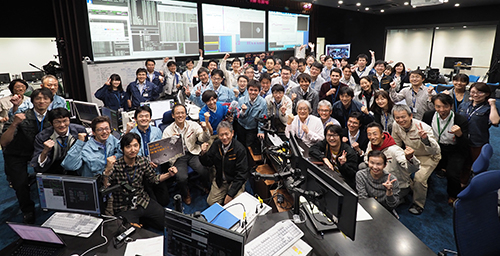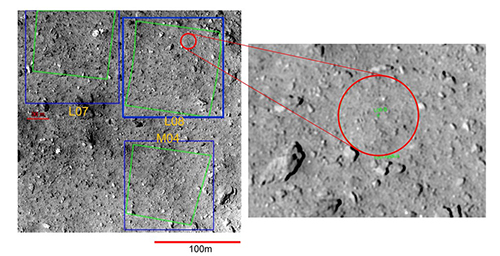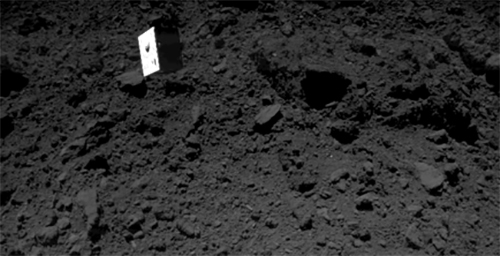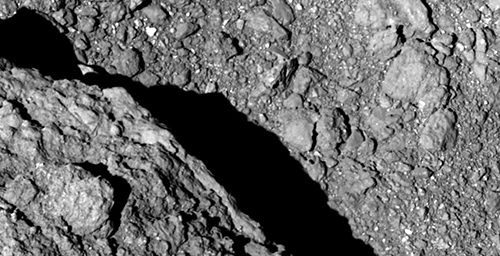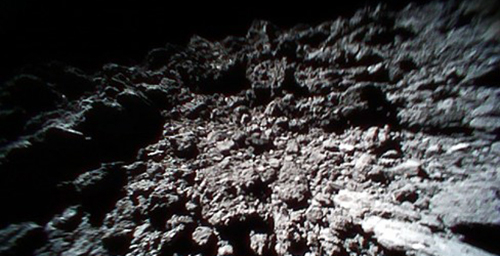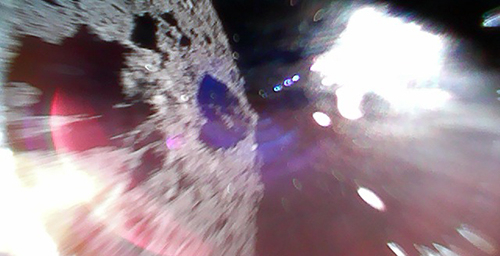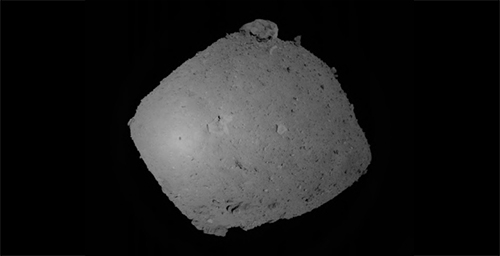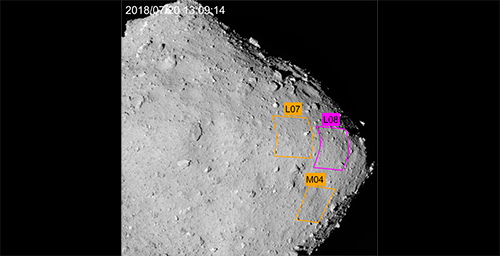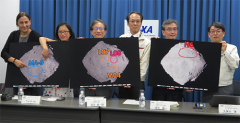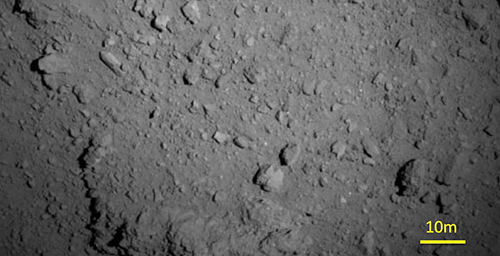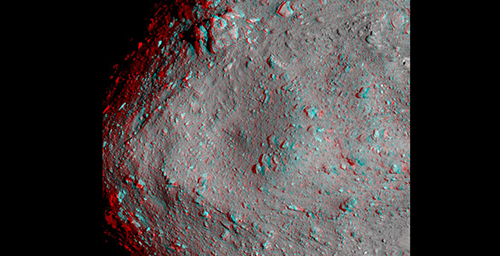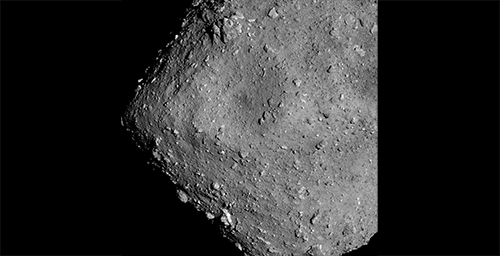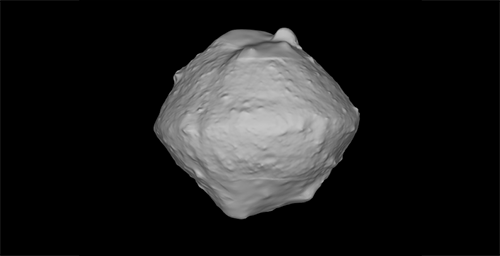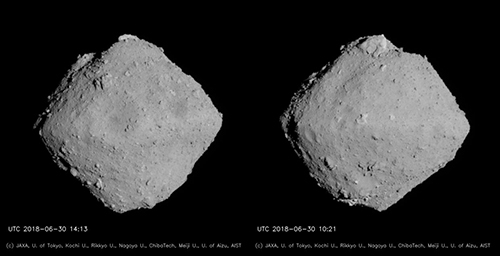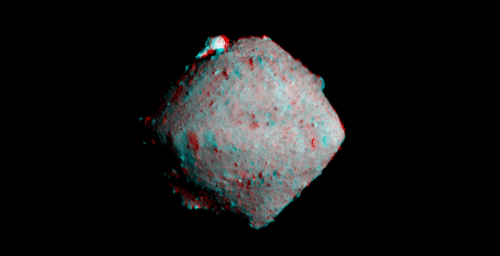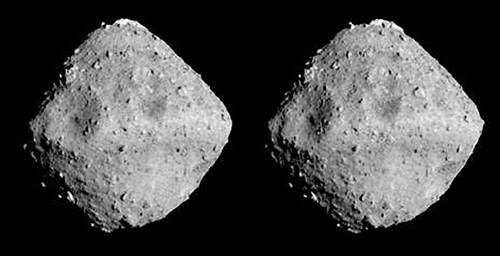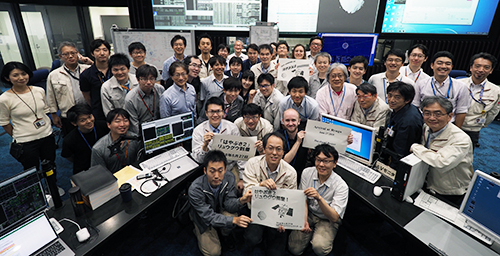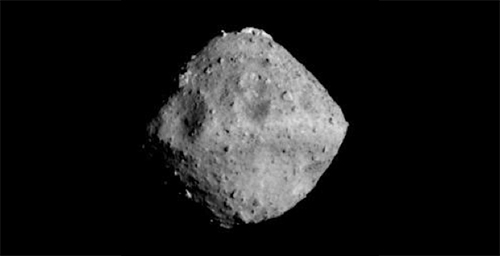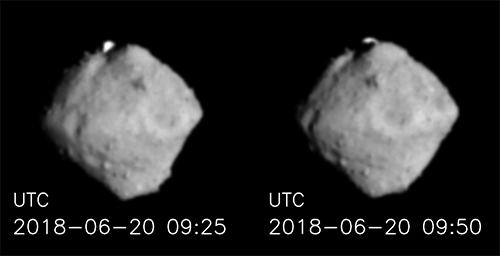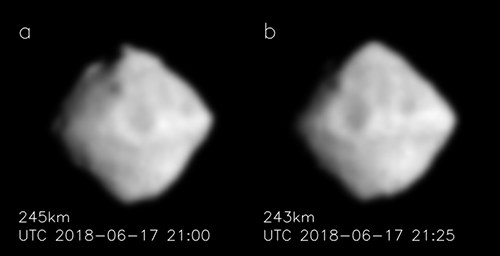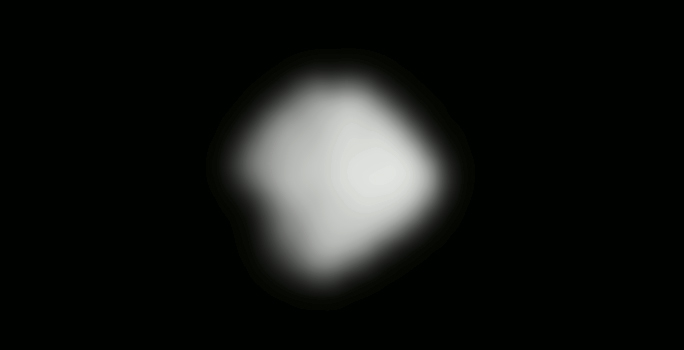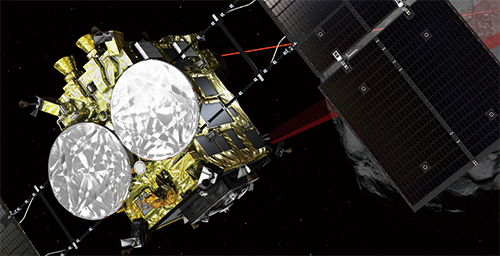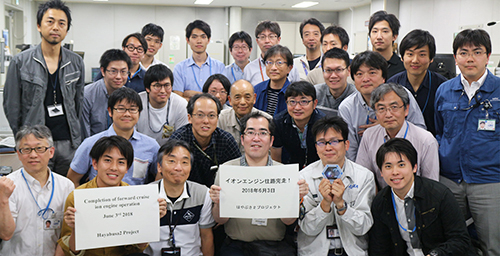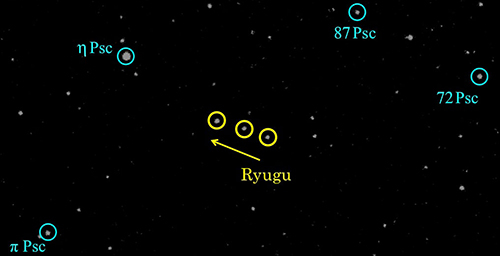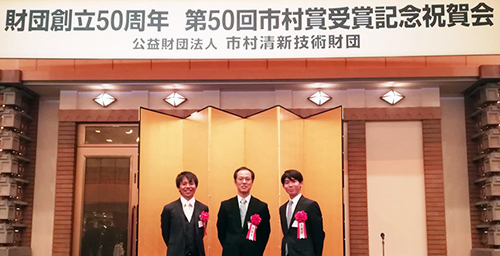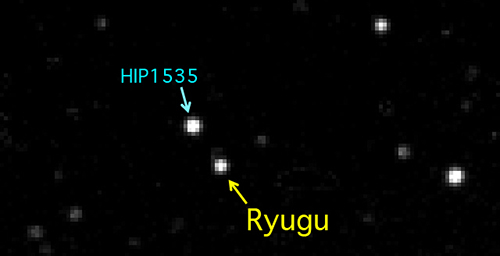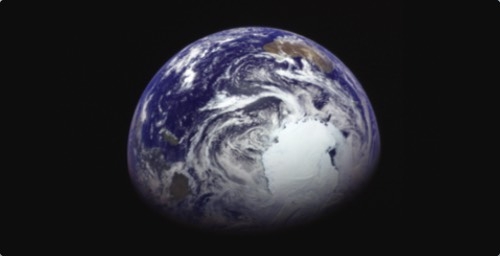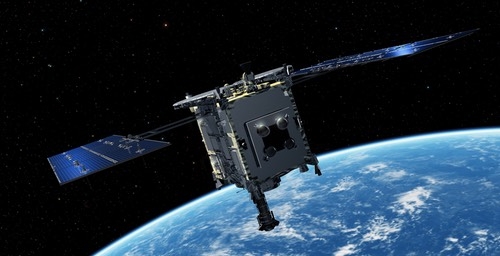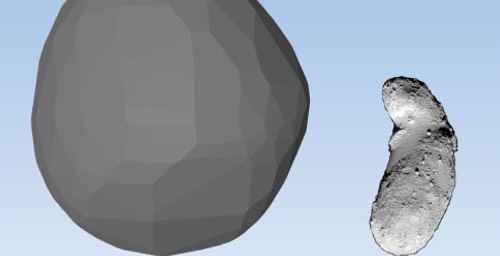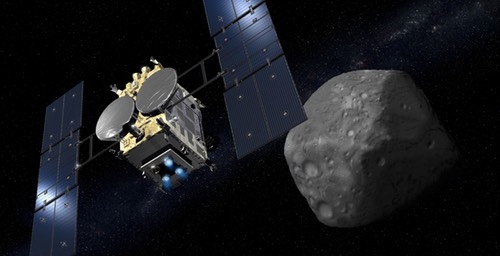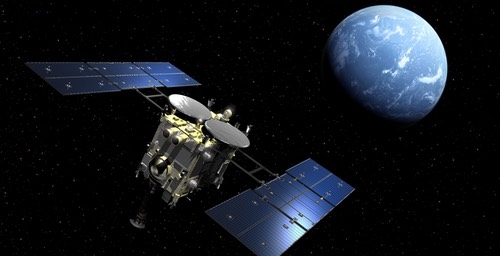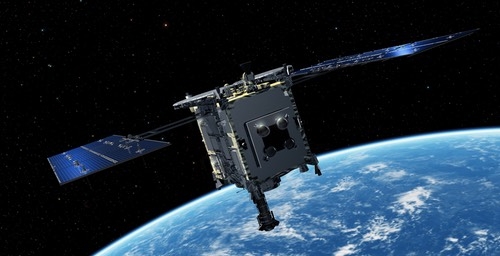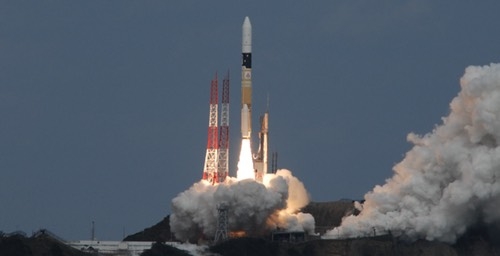Release summary
Analysis of returned samples is distinct from the analysis of meteorites because of the presence of geological information about the asteroid. However, can we expect to obtain valuable information that will lead to an understanding of the entire asteroid from samples gathered from limited areas? In light of these concerns, the team decided to run a full information analysis in which observations of the asteroid on different length scales (multi-scale) from the global appearance of the asteroid down to the millimeter sized particles in the return sample were analysed and compared. In this study, we combined the results of multi-scale observations of Ryugu surface particles by CAM-H during the spacecraft touchdowns, the observations made by the MINERVA-II1 hopping rovers at multiple locations across the asteroid, and the return samples in the clean chamber. We found that the return samples well represent Ryugu surface particles and that there are characteristic flat and elongated particles on the asteroid. In addition, CAM-H images showed that the sampler system correctly operated to collect and return 5 grams of samples.
Multiscale observation
JAXA's Hayabusa2 spacecraft explored the 1-kilometer-sized asteroid Ryugu, obtained detailed surface images and information on the asteroid material, and returned centimeter- to millimeter-sized particles, which are now being analyzed in the laboratory down to the atomic level. The mission aims to unravel the 4.6 billion-year-long Solar System history over a spatial scale of billions of kilometers by synthesizing the results from multi-scale observations. In particular, the spacecraft-returned samples are different from extraterrestrial materials recovered on the ground (i.e. meteorites) because the returned samples are obtained with geological information after the spacecraft clarifies the nature of the target object. Ryugu samples will therefore tell us what elements and materials constitute C-type asteroids.
What a small monitor camera CAM-H observed during touchdowns
In order to use the knowledge from the sample to understand the asteroid history and thus explore the history of the Solar System, it is essential to compare what the spacecraft observed at asteroid Ryugu with the returned samples and to determine whether or not the samples are representative of the asteroid. In this study, we analyzed the images taken by wide-angle optical navigation cameras (ONC-W1, ONC-W2) and a small monitor camera CAM-H during sample collection, and the images taken by the MINERVA-II1 rovers as they hopped around on Ryugu. We compared these with the images of returned grains in the clean chamber to examine the representativeness of the returned sample. CAM-H, which was made possible by generous donations, played a particularly important role in this work.
At the point of touchdown to collect samples, the Hayabusa2 spacecraft fired a small projectile along the sampler horn to eject small particles or break up large boulders so that the sample could easily pass through the sampler horn under microgravity and into the sample container onboard the spacecraft. The CAM-H images show that many centimeter- and millimeter-sized particles were ejected from the lower part of the sampler horn immediately after the spacecraft fired a projectile. Some of the particles were ejected toward CAM-H (Fig. 1), and the ejection angles and velocities of these particles match well with those predicted by ground-based projectile shooting experiments and numerical simulations. This confirms that the projectile was successfully fired on the surface of Ryugu. The quantity of particles in the image also indicates that the collection of 5g of sample (greatly exceeding the minimum requirement of 100 mg) was due to the projectile shooting onto the surface.
Fig. 1 (Left and center) CAM-H images taken 2 and 3 seconds after the first touchdown, showing particles with arrows flying toward CAM-H from the bottom of the sampler horn. (Right) CAM-H image taken 2 seconds after the second touchdown, showing that the particles with white arrows are cm in size based on the shadows on the rocket coupling ring *1 (Credit: JAXA).
The images taken by CAM-H during the ascent after the two touchdowns on asteroid Ryugu show particles flying over the surface of Ryugu, which were raised by the thruster operation for the spacecraft ascent. These particles were sometimes described as looking like "confetti". We followed each flying particle with multiple images and analyzed the shapes of 67 particles. We found that there are two types of particles: those with distinct irregularities, and those with few irregularities and smoothness. This is similar to what the spacecraft and the MASCOT *2 lander found in the boulders on the surface of Ryugu, suggesting that the particles near the touchdown sites are similar to those on the surface of Ryugu. It was also found that there are several flat and elongated particles (17 out of 67 particles) in the "confetti" particles (Fig. 2). The flat and elongated particles were observed on both touchdown operations, indicating that they are typical of the surface of Ryugu.
Fig. 2 CAM-H images during the ascent of the spacecraft after the first touchdown. The particle in a white circle in the left image was spinning and moved from right to left and showed a flat shape in the image taken one second later (right) (Credit: JAXA).
Representativeness of returned particles from morphological point of view
The flat particle shape can also be seen in the images taken by the wide-angle optical navigation camera just before touchdown, and the MINERVA-IIA1 rover also found a cracked rock on the surface of Ryugu (Fig. 3), where a platy grain is about to be chipped off. The flat morphology seems thus to be one of the representative grain morphologies on the Ryugu surface. We also found that the return sample also contained flat and elongated particles from the particle observation in the curation chamber (Fig. 3). The grain C0002 *3 with a size close to 1 cm is one of such particles collected at the second touchdown (Fig. 3).
Fig. 3 (Left) The surface of Ryugu as photographed by MINERVA-II1 Rover-1A "HIBOU". HIBOU's shadow is seen in the center. (right) A 1-cm-sized particle C0002 collected during the second touchdown (Credit: JAXA).
From the image analysis of the entire surface and touchdown sites and the initial description of the return sample, it is now clear that the Hayabusa2 sampling system worked properly and successfully brought back particles representative of the surface of Ryugu. The results of detailed analysis of the returned sample, which is now in progress, will show the characteristics of the particles representing Ryugu, and are expected to reveal the origin and evolution of Ryugu. Beyond that, we hope to find answers to questions such as the origin and evolution of the Solar System, and the supply of water and organic matter to the Earth, which is one of the questions targeted by small body exploration.
Glossery
*1 Rocket coupling ring:A ring-shaped structure to berth the Hayabusa2 spacecraft to the launch vehicle.
*2 MASCOT lander:A lander aboard Hayabusa2, jointly developed by DLR (Deutsches Zentrum für Luft- und Raumfahrt) and CNES (Centre National d'Etudes Spatiales).
*3 Grain C0002:A grain collected at the second touchdown. Its longest dimension is ~1 cm. Detailed analysis of this grain by the initial analysis team is in progress.
Publication information
Paper title:Pebbles and sand on asteroid (162173) Ryugu: in situ observation and particles returned to Earth
Journal title: Science, 10 February 2022
DOI:10.1126/science.abj8624
Corresponding Author:Shogo Tachibana, UTokyo Organization for Planetary and Space Science, The University of Tokyo / ISAS, JAXA
Authors:
H. Sawada2, R. Okazaki3, Y. Takano4, K. Sakamoto1,2, Y. N. Miura5, C. Okamoto6†, H. Yano2, S. Yamanouchi3, P. Michel7, Y. Zhang7, S. Schwartz8,9, F. Thuillet7‡, H. Yurimoto10, T. Nakamura11, T. Noguchi3,12, H. Yabuta13, H. Naraoka3, A. Tsuchiyama14,15, N. Imae16, K. Kurosawa17, A. M. Nakamura6, K. Ogawa18, S. Sugita1, T. Morota1, R. Honda19, S. Kameda20, E. Tatsumi1,21, Y. Cho1, K. Yoshioka1, Y. Yokota2, M. Hayakawa2, M. Matsuoka2§, N. Sakatani20, M. Yamada17, T. Kouyama22, H. Suzuki23, C. Honda24, T. Yoshimitsu2, T. Kubota2, H. Demura24, T. Yada2, M. Nishimura2, K. Yogata2, A. Nakato2, M. Yoshitake2, A. I. Suzuki25,26, S. Furuya1,2, K. Hatakeda25, A. Miyazaki2, K. Kumagai25, T. Okada2, M. Abe2,27, T. Usui2, T. R. Ireland28, M. Fujimoto2, T. Yamada2, M. Arakawa6, H. C. Connolly, Jr.29,8, A. Fujii2, S. Hasegawa2, N. Hirata24, N. Hirata6, C. Hirose30, S. Hosoda2, Y. Iijima2†, H. Ikeda2, M. Ishiguro31, Y. Ishihara18, T. Iwata2,27, S. Kikuchi2,17, K. Kitazato24, D. S. Lauretta8, G. Libourel7, B. Marty32, K. Matsumoto33,34, T. Michikami35, Y. Mimasu2, A. Miura2,27, O. Mori2, K. Nakamura-Messenger36, N. Namiki33,34, A. N. Nguyen36, L. R. Nittler37, H. Noda33,34, R. Noguchi2,38, N. Ogawa18, G. Ono30, M. Ozaki2,27, H. Senshu17, T. Shimada18, Y. Shimaki2, K. Shirai2, S. Soldini39, T. Takahashi40, Y. Takei2,30, H. Takeuchi2,27, R. Tsukizaki2, K. Wada17, Y. Yamamoto2,27, K. Yoshikawa30, K. Yumoto1, M. E. Zolensky36, S. Nakazawa2, F. Terui2#, S. Tanaka2,27, T. Saiki2, M. Yoshikawa2,27, S. Watanabe41, Y. Tsuda2,42
[1] UTokyo Organization for Planetary and Space Science/Department of Earth and Planetary Science, The University of Tokyo, Tokyo 113-0033, Japan.
[2] Institute of Space and Astronautical Science, Japan Aerospace Exploration Agency (JAXA), Sagamihara 252-5210, Japan.
[3] Department of Earth and Planetary Sciences, Kyushu University, Fukuoka 812-8581, Japan.
[4] Biogeochemistry Research Center, Japan Agency for Marine-Earth Science and Technology, Kanagawa 237-0061, Japan.
[5] Earthquake Research Institute, The University of Tokyo, Tokyo 113-0032, Japan.
[6] Department of Planetology, Kobe University, Kobe 657-8501, Japan.
[7] Universit. C.te d'Azur, Observatoire de la C.te d'Azur, Centre national de la recherche scientifique, Laboratoire Lagrange, Bd de l'Observatoire, CS 34229, F-06304 Nice cedex 4, France.
[8] Lunar and Planetary Laboratory, University of Arizona, Tucson, AZ 85705, USA.
[9] Planetary Science Institute, Tucson, AZ 85719, USA.
[10] Department of Earth and Planetary Sciences, Hokkaido University, Sapporo 060-0810, Japan.
[11] Department of Earth Sciences, Tohoku University, Sendai 980-8578, Japan.
[12] Division of Earth and Planetary Sciences, Kyoto University, Kyoto, Japan.
[13] Department of Earth and Planetary Systems Science, Hiroshima University, Higashi-Hiroshima 739-8526, Japan.
[14] Research Organization of Science and Technology, Ritsumeikan University, Kusatsu 525-8577, Japan.
[15] Guangzhou Institute of Geochemistry, Chinese Academy of Sciences, Guangzhou, 510640,China.
[16] Polar Science Resources Center, National Institute of Polar Research, Tokyo 190-8518, Japan.
[17] Planetary Exploration Research Center, Chiba Institute of Technology, Narashino 275-0016, Japan.
[18] JAXA Space Exploration Center, Japan Aerospace Exploration Agency (JAXA), Sagamihara 252-5210, Japan.
[19] Department of Information Science, Kochi University, Kochi 780-8520, Japan.
[20] Department of Physics, Rikkyo University, Tokyo 171-8501, Japan.
[21] Instituto de Astrof.sica de Canarias, University of La Laguna, Tenerife, Spain.
[22] Information Technology and Human Factors, National Institute of Advanced Industrial Science and Technology, Tokyo 135-0064, Japan.
[23] Department of Physics, Meiji University, Kawasaki 214-8571, Japan.
[24] Aizu Research Center for Space Informatics, University of Aizu, Aizu-Wakamatsu 965-8580, Japan.
[25] Marine Works Japan Ltd., Yokosuka 237-0063 Japan.
[26] Department of Economics, Toyo University, Tokyo 112-8606 Japan.
[27] Department of Space and Astronautical Science, The Graduate University for Advanced Studies, SOKENDAI, Hayama 240-0193, Japan.
[28] School of Earth and Environmental Sciences, The University of Queensland, St Lucia QLD 4072, Australia.
[29] Department of Geology, Rowan University, Glassboro, NJ 08028, USA.
[30] Research and Development Directorate, Japan Aerospace Exploration Agency (JAXA), Sagamihara 252-5210, Japan.
[31] Department of Physics and Astronomy, Seoul National University, Seoul 08826, Korea.
[32] Universit. de Lorraine, Centre national de la recherche scientifique, Centre de Recherches P.trographiques et G.ochimiques, F-54000 Nancy, France.
[33] National Astronomical Observatory of Japan, Mitaka 181-8588, Japan.
[34] Department of Astronomical Science, The Graduate University for Advanced Studies, SOKENDAI, Hayama 240-0193, Japan.
[35] Department of Mechanical Engineering, Kindai University, Higashi-Hiroshima 739-2116, Japan.
[36] NASA Johnson Space Center, Houston,TX 77058, USA.
[37] Carnegie Institution for Science, Washington, DC 20015, USA.
[38] Department of Science, Niigata University, Niigata 950-2181, Japan.
[39] Department of Mechanical, Materials and Aerospace Engineering, University of Liverpool, Liverpool L69 3BX, UK.
[40] NEC Corporation, Tokyo 183-8501, Japan.
[41] Department of Earth and Environmental Sciences, Nagoya University, Nagoya 464-8601, Japan.
[42] Department of Aeronautics and Astronautics, The University of Tokyo, Tokyo 113-0033, Japan.
† Deceased.
‡ Present address: CS Group, 31506 Toulouse Cedex 5, France.
§ Present address: Laboratoire d'Etudes Spatiales et d'Instrumentation en Astrophysique, Observatoire de Paris, 92195 Meudon, France.
# Present address: Department of Mechanical Engineering, Kanagawa Institute of Technology, Kanagawa 243-0292, Japan.


